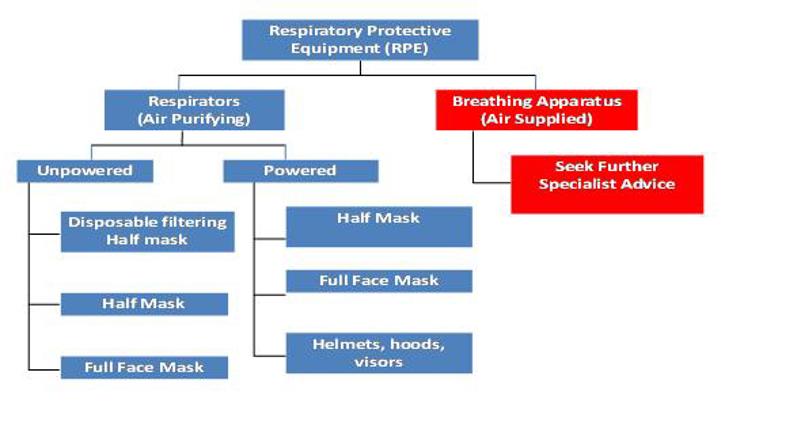Respiratory Protective Equipment (RPE)
Respiratory Protective Equipment (RPE) is a particular type of Personal Protective Equipment (PPE), used to protect the individual wearer against the inhalation of hazardous substances in the workplace air. RPE should only be used where adequate control of exposure cannot be achieved by other means, in other words, as a last resort within the hierarchy of control measures: Elimination, Substitution, Engineering Controls, Administrative Controls, PPE.
Employers are required to firstly attempt to eliminate the hazard at source. RPE should only be used after all other reasonably practicable control measures have been taken. PPE is considered a last resort because it only protects individual workers, is prone to failure or misuse, such as wearing the wrong RPE for the job, and employees wearing RPE may get a false sense of security when using RPE.
Respiratory Protective Equipment (RPE) not worn or selected appropriately is totally ineffective and may give the user a false sense of protection.

Seven Elements of a Respiratory Programme
- A written plan detailing how the programme is managed
- A complete assessment and knowledge of respiratory hazards that will be encountered in the workplace
- Procedures and equipment to control respiratory hazards, including the use of engineering controls and work practices designed to limit or reduce employee exposures to such hazards
- Guidelines for the proper selection of appropriate respiratory protective equipment
- An employee training program covering hazard recognition, the dangers associated with respiratory hazards, and proper care and use of respiratory protective equipment
- Inspection, maintenance, and repair of respiratory protective equipment
- Medical surveillance of employees, where necessary
For further guidance or RPE see Health and Safety Authority - Respiratory Protective Equipment
For advice on assigned protection factors (APFs) see our guidance: Assigned Protection Factors for Air-Supplied or Powered Respirators


